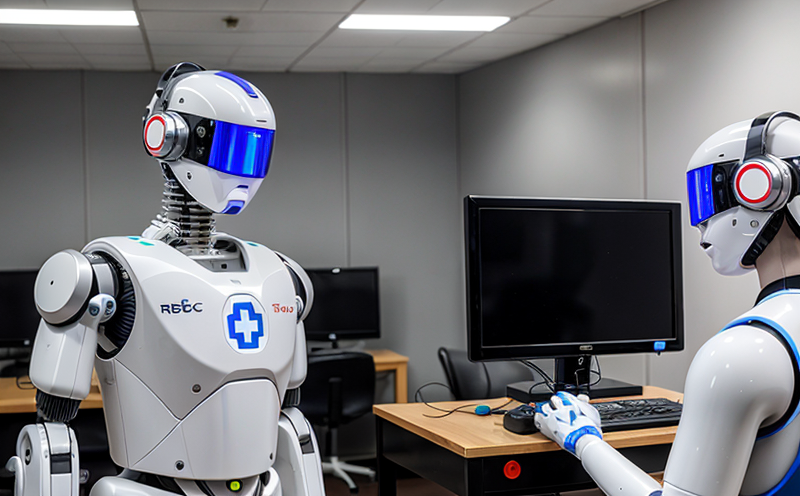UL 4600 Safety Testing of Autonomous Service Robots
The UL 4600 safety testing standard specifically addresses the requirements for ensuring the safe operation of autonomous service robots. This test is critical for manufacturers and developers in the robotics sector, particularly those working on autonomous cleaning robots, delivery drones, and other devices designed to interact closely with human environments.
UL 4600 covers a broad spectrum of safety concerns including electrical safety, mechanical stability, environmental resistance, and operational reliability. The standard aims not only at protecting users but also bystanders from potential hazards that autonomous service robots might pose in various settings such as homes, offices, or public spaces.
The process involves rigorous testing to ensure compliance with international standards like UL 4600. This includes electrical safety checks to prevent short circuits and fires, mechanical strength assessments to confirm robust design against physical impacts, environmental adaptability tests that evaluate performance in diverse conditions, and software integrity evaluations to ascertain the stability of control algorithms.
Testing is performed on a variety of specimens that represent real-world scenarios. These could include static robots placed under different stress conditions, mobile units traversing complex terrains, or drones flying through simulated environments. Each test aims at identifying potential risks early in the development cycle so they can be mitigated before product release.
The UL 4600 safety testing protocol is designed to cover all aspects of autonomous service robotics, from initial design phases right up until final deployment. By adhering strictly to this standard, manufacturers can demonstrate their commitment to safety and compliance with regulatory requirements.
In summary, the UL 4600 safety testing for autonomous service robots ensures that these devices meet stringent safety criteria before being introduced into public or private spaces. This helps build trust among consumers by reducing risk perception associated with new technologies.
- Ensures electrical and mechanical stability
- Evaluates environmental resistance
- Aims at operational reliability
- Identifies potential risks early in the development cycle
- Demonstrates compliance with regulatory requirements
Why It Matters
The safety of autonomous service robots is paramount given their increasing presence in everyday life. These machines interact directly with humans and can perform tasks that require precision, efficiency, and reliability. However, they must do so without compromising human health or causing property damage.
Compliance with UL 4600 not only enhances public perception of the technology but also facilitates smoother market entry for products meeting these stringent criteria. It provides reassurance to potential buyers about the robustness and dependability of autonomous service robots, thereby fostering confidence in their use within various applications.
Beyond mere compliance, adhering to UL 4600 helps establish a benchmark for excellence in robotic engineering. By setting high standards for safety features like fail-safe mechanisms and emergency stop capabilities, this certification encourages innovation towards safer designs capable of handling unexpected situations gracefully.
Why Choose This Test
Quality and Reliability Assurance
The UL 4600 certification process is designed not just for compliance but also for enhancing the overall quality and reliability of autonomous service robots. Through meticulous testing, it helps identify and rectify any shortcomings early in the development lifecycle.
One key aspect of this assurance lies in the thorough validation of electrical safety features. This includes verifying that all components function correctly under normal operating conditions as well as during fault scenarios. Ensuring robust mechanical design is another crucial element, which involves assessing structural integrity through simulated impacts and load tests.
Environmental adaptability testing plays a vital role too by simulating different climatic and operational conditions in which the robots will operate. This helps manufacturers understand how their products behave under extreme weather or usage patterns, enabling them to make necessary adjustments for better performance.
The final piece of this puzzle is ensuring software integrity. With autonomous service robots relying heavily on advanced programming languages and algorithms, maintaining consistent functionality across all hardware platforms becomes paramount. Regular updates based on feedback from these tests ensure that the systems remain reliable and secure over time.
Ultimately, UL 4600 certification serves as a testament to the commitment towards producing safe, efficient, and dependable autonomous service robots. It sets benchmarks for excellence within the industry while fostering trust among stakeholders.





